#climateweek
Text

Enjoy a chapter of ...
Running Out: In Search of Water on the High Plain
Lucas Bessire
Finalist for the National Book Award
An intimate reckoning with aquifer depletion in America's heartland
#water#water conservation#sustainability#environment#environmentalism#environmentalists#climatechange#climateweek#un climate summit#books#best selling#national book award
10 notes
·
View notes
Text

youtube
The digital Healing Waters art show will be on exhibit at Climate Week New York, Florida Climate Week
Healing Waters Art Show by Selva Ozelli
2 notes
·
View notes
Photo

#englishbulldog #empirestatebuilding #inhonorof #climateweek #inpartnershipwith #nycandcompany #thecompanygroup https://www.instagram.com/p/CittS_bOkcW/?igshid=NGJjMDIxMWI=
#englishbulldog#empirestatebuilding#inhonorof#climateweek#inpartnershipwith#nycandcompany#thecompanygroup
0 notes
Text
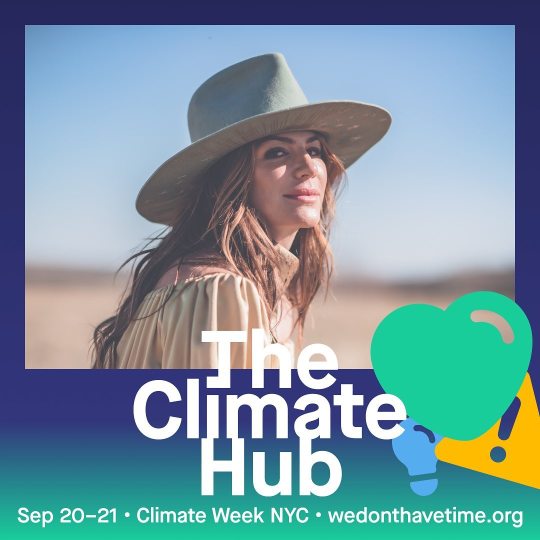
genpadalecki: heading to new york next week for #climateweek to speak on a panel about growing the climate community. feeling so honored and excited to take part in this important discussion. click the link in bio to register with @wedonthavetime0 and watch the broadcast online. 🌎❤️ -@genpadalecki, @kellymickle & @charliecapen, co-founders of @towwn
18 notes
·
View notes
Text
0 notes
Photo
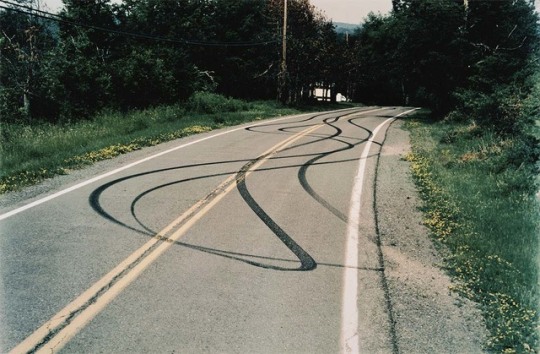
In the wake of the U.N. climate summit, youth climate protests and school strikes, this week, world leaders and communities are gathering to talk about What on Mother Earth is going on? Answer: Global temperature rise. Warming oceans. Shrinking glaciers. Deforestation. Droughts. Rising sea levels. Record high CO2 emissions. Floods. Ocean acidification. The Extinction Crisis. The Warmest Year on Record. At FEEL studio, we launched with an agenda committed to sustainable efforts and to continually address and redress how best we can do this. This Climate week we will not only share ways in which you can cut waste, consumption, and pollution, we encourage you to share back with us. Tell us how you FEEL about it all. #climateweek #FEELFullcircle ( photo : Richard Prince ) https://www.instagram.com/p/B2zP0VEpaMO/?igshid=1c9pnhkva5aga
2 notes
·
View notes
Photo
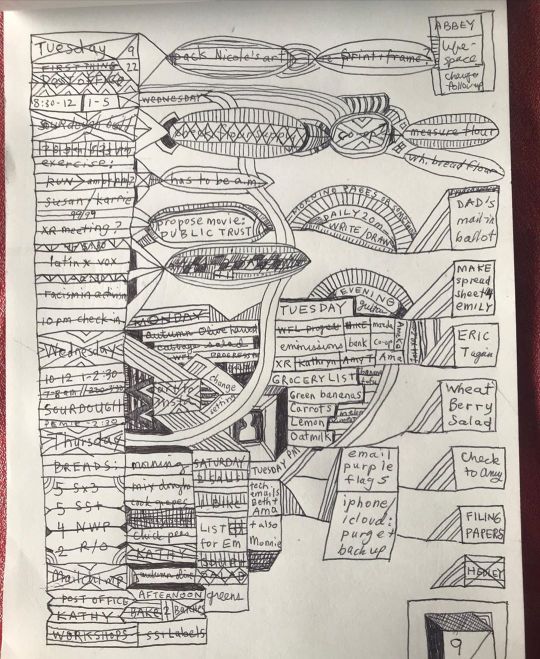
Today’s work in progress. After an extremely busy several months mostly devoted to Climate Week, I am dividing my time between foraging and processing the spoils (next on deck: autumn olives, black walnuts, and hickory nuts), catching up on professional assignments (web and logo design), and physical therapy for a torn rotator cuff. And making lists. And crossing off items as I complete them. And a million other things, as evidenced by the lists. 😅 . . . #todolist #sketchbook #doodlesofinstagram #doodles #doodling #sketchbookpage #penandink #arting #climateweek #goals https://www.instagram.com/p/CFu26zCnmLV/?igshid=19dvy8dord5oz
#todolist#sketchbook#doodlesofinstagram#doodles#doodling#sketchbookpage#penandink#arting#climateweek#goals
0 notes
Text
New York State Climate Week News Roundup - September 26
Welcome to NYPA’s special Climate Week news roundup. This week we have stories on Governor Cuomo’s announcement of the first completed community solar plus energy project in New York, the new mission of a well-known New York City landmark, and updated Climate Week 2020 news out of Erie County.
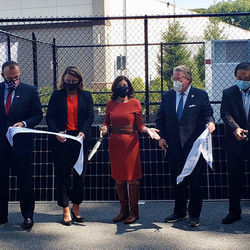
During Climate Week, Governor Cuomo Announces First Completed Community Solar Plus Energy Storage Project in New York
Earlier this week Governor Cuomo announced the completion of the first community solar paired with energy storage project in New York. The milestone project will reduce the energy costs for approximately 150 households in Westchester County and New York City and provide power to twelve Tesla electric vehicle supercharging stations. The announcement supports the Governor’s goals to install 6000 megawatts of solar by 2025 and 3000 megawatts of energy storage by 2030, as called for in the Climate Leadership and Community Protection Act.
"New York remains unwavering in our commitment to developing renewable energy resources that will grow our clean energy economy and advance our nation-leading plan to fight climate change," the Governor said. "This first-of-its-kind project in New York combines renewable energy and energy storage that together will deliver reliable, affordable and sustainable energy creating a model for communities around the state."
More details on this project can be found here.
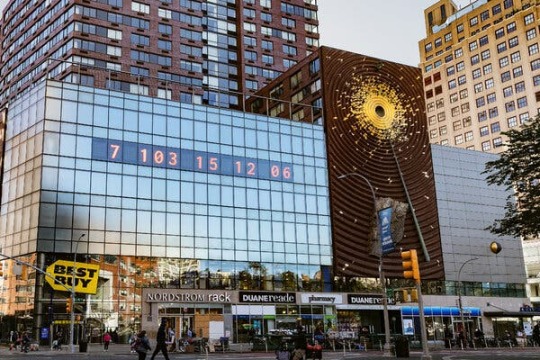
A New York Clock That Told Time Now Tells the Time Remaining
If you have lived in or visited New York City in the last 20 years and passed through Union Square, no doubt you have seen the Metronome clock. For more than 20 years, Metronome, which includes a 62-foot-wide 15-digit electronic clock has been one of the city’s most prominent and baffling public art projects. Its cryptic digital display once told the time in its own unique way, counting the hours, minutes and seconds (and fractions thereof) to and from midnight. But for years observers who did not understand how it worked suggested that it was measuring the acres of rainforest destroyed each year, tracking the world population or even that it had something to do with pi. None of that was true…the Metronome was simply telling time, uniquely.
Last Saturday, Metronome adopted a new ecologically sensitive mission. Now, instead of measuring 24-hour cycles, it is measuring what two artists, Gan Golan and Andrew Boyd, present as a critical window for action to prevent the effects of global warming from becoming irreversible. Read more about Metronome’s new mission here in the New York Times.
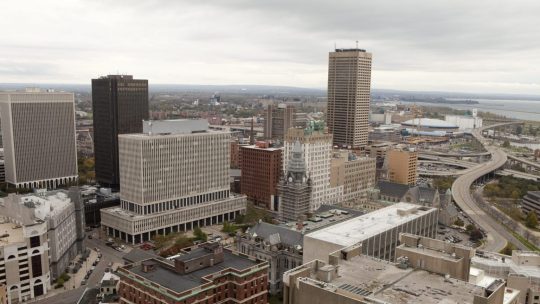
Observing Climate Week 2020, Erie County Moves Forward on Climate, Environmental Goals
Erie County is reaffirming its commitment to leadership on climate change and environmental protection as part of Climate Week 2020. It has released the Erie County Climate Vulnerability Assessment, focusing on threats specific to Erie County from climate change. Energy conservation is another large part of the effort, as is the increase in EV charging station availability.
“For Climate Week, Erie County is proud to highlight recent actions we have taken to protect the well-being of our community and the planet," said said Erie County Executive Mark C. Poloncarz. "Much hard work remains to be done, but I thank our internal Green Team and the many community partners and municipalities who are working with us to protect our region, develop a strong, green economy, and ensure that we lift up the vulnerable and historically disadvantaged communities who are most impacted by climate change.”
You can read more here.
0 notes
Text
Rethink Climate Change
For many of us, imagining the next hundred years may conjure cataclysmic images of manmade climate change and its consequences: widespread natural disasters, food insecurity, and mass migrations, to name a few. Unable to parse through conflicting messages of how one should think, react, and behave in the face of imminent doom, we may often surrender to feelings of avoidance or apathy. This month, in pursuit of clarity and advice, we gathered some of our authors and asked the following question: How should we think about the future in the face of climate change? Their perspectives offer us the tools to collectively rethink catastrophe in order to generate alternative possibilities of hope, action, or simple awareness regarding the planet and its beings.
Emily Huddart Kennedy | Eco-Types: Five Ways of Caring about the Environment
Contemplating the question brings tears to my eyes. It is a challenge for me to think much at all, because I am overwhelmed with feeling. And so, I answer, we should create quiet spaces to feel the future in the face of climate change.
In the present, climate change manifests in a curious sort of accounting in my life: what are the emissions from this or that meal? How can I use less gas to go about the tasks of the week? Have I taken more flights this year than I should have? Of course, when the air fills with smoke from wildfires hundreds of kilometres from my home, I am jolted from this rational calculus. But in the present, I think about climate change often. I think about how to lessen my own contributions to global greenhouse gas emissions, and I think about what elected representatives are doing to lessen my country’s emissions. On reflection, I’m surprised by how seldom I feel climate change in the present.
“Why should we encourage ourselves to feel this loss so profoundly? Because it feels honest and important. ”
There is so much around me that I love and am deeply invested in: my children, my niece and nephew, the forest around my home and its denizens, the air I breathe, the water I drink and swim in—and the creatures in that water. This is only a partial list of what comes quickly and immediately to mind when I consider how much loss climate change will exact. Climate change casts the future as a morass of loss.
Instead of distracting ourselves from the pain of this question, we should find moments to confront it. We should imagine a future with more frequent and severe storms and fires, with warming oceans, with flora and fauna struggling at the brink of their tolerance for safe conditions to live. We should contemplate the many species that we love having to witness and endure this intensity and scope of loss. We should feel, deeply feel, our own responses to that future.
Why should we encourage ourselves to feel this loss so profoundly? Because it feels honest and important. Confronting the pain of a future of loss reminded me of how much I love the world. It prompted me to remember the statistical miracle of our blue earth and its glorious diversity of ecosystems. It reminded me to be grateful that I see the stars at night, hear birdsong, see swordferns and cedar trees, swim in the Pacific Ocean, and simply live in a world that enables me to breathe and eat and drink. There are more theoretically sophisticated answers I could provide about the ways in which our emotions can connect us to others and motivate deeper engagement in climate-friendly practices. But that’s not what I want to emphasize here.
Aside from the odd volcanic eruption or a slight shift in the Earth’s orbit, humans cause climate change. By burning fossil fuels to generate power and produce food, clothing, and other consumables, and doing so at a profligate rate, we have likely irreversibly altered the climate. Trees convert carbon dioxide into oxygen, and maybe the fossil fuel industry will develop carbon capture and storage to store some of its own emissions, but there is not enough sequestration of carbon happening today to safeguard the future. We are dooming ourselves and future generations to loss and suffering every day that we continue to burn fossil fuels. We should feel the pain of a future that is shaped by our present.
Henry Shue | The Pivotal Generation: Why We Have a Moral Responsibility to Slow Climate Change Right Now
Delay is the new denial. Fossil fuel interests—owners of coal, oil, gas, pipelines, refineries, and their massive supporting infrastructure, including their enablers among banks and asset managers—are attempting to divert the attention of concerned citizens by announcing vague distant goals like “net zero 2050” while planning to continue business as usual for as many decades as possible. [1] Increases in renewable energy and its infrastructure, including most importantly an enlarged and restructured electricity grid, are essential. But because it is the carbon emissions from fossil fuels that keep making climate change worse, simply piling renewable energy on top of carbon energy does nothing in itself to slow climate change. Renewable energy must substitute—not be added to—carbon energy, which means that the production of carbon energy must be cut back immediately and sharply. This is what fossil fuel interests are adamantly refusing to do, all while pretending that they are acting in the public interest so that decisive action against them will be delayed as long as possible.
“This is the critical decade in human history for the protection of our planet’s climate. We must be vigilantly alert for false pretexts for delay.”
Rapidly worsening climate change requires disciplined thinking that is not distracted by the elaborate deceptions and trickery of entrenched fossil fuel interests. Above all, we must face the fact that, contrary to what they seem to promise, oil and gas companies are devoting more than 95% of their capital investment to increased production through continuing exploration for new sources and the drilling of new wells.[2] The business model to which they cling makes climate change worse. In order to cover up this fact, the carbon industries engage in multiple diversions.[3] Examples:
1. Do not be fanatic about reducing carbon emissions now because we can use carbon dioxide removal (CDR) later.
CDR is indeed unavoidable because our emissions reductions have been so pathetic, but the hope of CDR later is no reason for less emissions reduction now. While the emissions are in the atmosphere before being removed, they can make climate change worse in ways that are irreversible even after the emissions themselves are reversed.
2. Industry plans for additional extraction of oil and gas are fine because the emissions can be prevented by carbon capture and storage (CCS).
The Biden Administration’s Inflation Reduction Act contains huge subsidies for CCS, heavily lobbied for by the industry. CCS is experimental, has never yet proven financially sustainable, and might never be viable at scale. The industry refused to invest in developing CCS until public subsidies were offered. Additional extraction should be made conditional on proven viable large-scale CCS, not based on fantasies of future CCS.
3. Extraction can continue because emissions can be offset by, for example, planting vast forests.
Many offset projects are utterly fraudulent.[4] Permanent sinks for carbon would be as good as emissions reductions, but rigorous inspection and verification of supposed “offsets” is necessary and has not yet been institutionalized. Meanwhile, emissions cuts must be made, not evaded by purchasing “offsets.”
4. Gas can be a temporary bridge! For example, in order to support the Europeans to help the Ukrainians defend against Putin’s invasion, we should replace Russian gas with liquefied natural gas (LNG) from US fracking by building new LNG export facilities in Louisiana and Texas.
New gas liquefaction facilities take years to build—they are no help now and would be financially viable only if used for decades, not just temporarily. New wind and solar can be built more quickly and less expensively, and they are safe for the climate. Meanwhile, enough LNG is available for Europe now.[5]
This is the critical decade in human history for the protection of our planet’s climate. We must be vigilantly alert for false pretexts for delay. Delay is the new denial.
Philipp Lehmann | Desert Edens: Colonial Climate Engineering in the Age of Anxiety
Ask a historian about the future, and you are bound to get an evasive answer. I am afraid I will be no exception here, but I hope that the reader may find some morsels of insight, or at least points of contention, in my evasiveness.
In light of the difficulties of politicians, scientists, and many other experts to reach firm conclusions about the right response to the impending—or, some would say, ongoing—climate catastrophe, I fear I cannot provide any prescriptive wisdom for the future. Instead, I have some thoughts on what we could add to our approach beyond the (sadly justified) doom and gloom narratives on the one hand and the extremely important search for pragmatic responses to a warming globe on the other.
We are now at a point where the attempts to halt and possibly even reverse climate change have given way to efforts to slow down the speed of anthropogenic global warming and to withstand its effects. As “sustainability” seems like a chimera of the past these days, “resilience” has become one of the most pervasive buzzwords of the moment, conjuring up the ability of humanity and possibly the flora and fauna to resist the most devastating consequences of rapidly changing environmental conditions. From infrastructural programs like BRIC (Building Resilient Infrastructure and Communities) to university courses, programs, and institutes in resilience, the concept has been useful in mustering the defensive strength of human societies.
“If climate change forces us to think about our collective future, then let’s try to make it a future that is actually worth living in.”
What has been missing from a large part of the discussions about climate resilience is a more creative dimension. Even in an explicitly more optimistic take on the future in “Beyond Catastrophe” in the New York Times Magazine, David Wallace-Wells concludes that the “new world must be made navigable—through action to limit the damage and adaptation to defend what can’t be stopped.” But perhaps limiting and saving are not—or rather, not all—we should be targeting. Rather than maintaining and safeguarding existing institutions and structures (some of which have gotten us into our dire situation in the first place), this time of crisis could also be a period for the envisioning of alternative futures that go beyond maintenance and that delineate and design new ways of living in—and interacting with—a changed and changing environment.
At this point, I must be frank and once again hide behind my opening line and the space constraints of this short thought piece: what exactly those alternative futures could or should be, I cannot say for certain. However, I believe that if there is anything to be learned from history, it is that things rarely turn out as people expect and that contingency is a powerful force. With that in mind, let’s think about resilience not only in terms of its etymological origin in the Latin word for “jumping back” or “recoiling,” but as a call to break out of old and overcome dynamics. If climate change forces us to think about our collective future, then let’s try to make it a future that is actually worth living in.
Whatever this future looks like, we cannot simply depend on technology, as some overly optimistic commentators and some geo-engineering schemes have suggested. We need to think holistically in how technological, economic, political, and cultural changes will affect not just human society as a whole, but the whole multitude of diverse societies and communities around the globe. As it stands, the costs of climate change are being borne disproportionately by the economically disadvantaged and the politically marginalized. Our responses need to take that into account and, maybe most importantly, include the knowledge and wisdom of people who are affected by climate change but are not generally seen as part of the decision-making processes. A positive spin on “resilience” could encourage us to envision what kinds of inclusive communities we would like to build and foster in environments shaped by global warming. As a historian, I am sadly confident that we will not achieve the ideal societies we imagine, but I am just as confident that, in our creativity, we have one of the most powerful tools at our disposal to react to changes, challenges, and even disasters.
Emily Huddart Kennedy is associate professor of sociology at the University of British Columbia.
Henry Shue is Senior Research Fellow at the Centre for International Studies at the University of Oxford, where he is also Senior Research Fellow Emeritus at Merton College. His books include Basic Rights (Princeton), Climate Justice, and Fighting Hurt. In 1976, he cofounded the Institute for Philosophy and Public Policy at the University of Maryland, and in recent years he was a supporter of the successful campaign by Virginia’s Augusta County Alliance to stop the Atlantic Coast Pipeline.
Philipp Lehmann is assistant professor of history at University of California, Riverside.
1 note
·
View note
Text

0 notes
Photo

Climate campaigners unveiled a huge countdown clock on Saturday, showing how little time is left before global temperatures hit a critical high, to kick off a week of climate action in New York. . The digital installation shows 7 years and 102 days remain before average global temperatures, at current emission rates, reach 1.5 degrees Celsius above pre-industrial levels. . The UN has warned of huge global changes, such as the loss of coral reefs and Arctic sea ice, if the 1.5 degree threshold is crossed. . The clock’s installation will take over what is known as the Metronome, where 15 spinning LED digits tell the time of day and the time remaining in a day, down to a hundredth of a second. It is set in the side of a glass building overlooking Union Square. . For the latest news updates 🌀 Follow @the24times 💦 . Source: #cnnnews18 #ClimateChange #NewYork #UnionSquare #ClimateWeek #Countdownclock #Climate #climatedisaster #the24times (at New York, New York) https://www.instagram.com/p/CFcfu1qFomh/?igshid=k0ibirfyxoyj
#cnnnews18#climatechange#newyork#unionsquare#climateweek#countdownclock#climate#climatedisaster#the24times
0 notes
Photo

#empirestatebuilding #green #climateweek https://www.instagram.com/p/CFYbnXbnMRI/?igshid=12df2vq9w3vct
0 notes
Photo

Peace and balance to all the water protectors and all my relations ☘️🥦🔌 @nahkobear @xiuhtezcatl @ietef Nyc #climateweek (at Brooklyn Steel) https://www.instagram.com/p/B3DMTy-ARxx/?igshid=a1ctdii1ubxb
0 notes
Photo
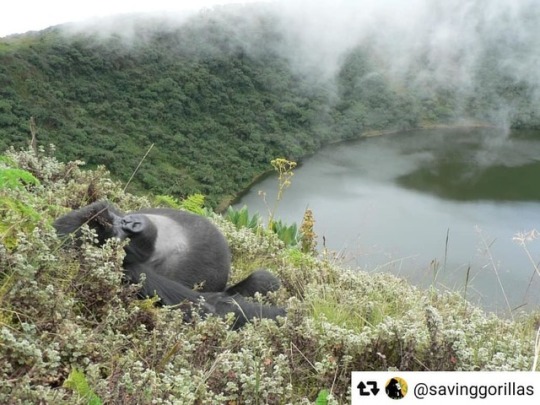
#Repost @savinggorillas with @repostsaveapp ・・・ The struggles of gorillas may seem thousands of miles away from our busy lives. But their fight for survival is really our own. The forest where they live is the second-largest we have left – literally the lungs of our planet, and one of our best natural defenses against climate change. They need it to thrive, and so do we. #ThereisnoplanetB #ClimateAction #ClimateWeek⠀ ⠀ 📸: Veronica Vecellio https://www.instagram.com/p/B267qELnT4G/?igshid=3oguf0arix0v
0 notes
Photo
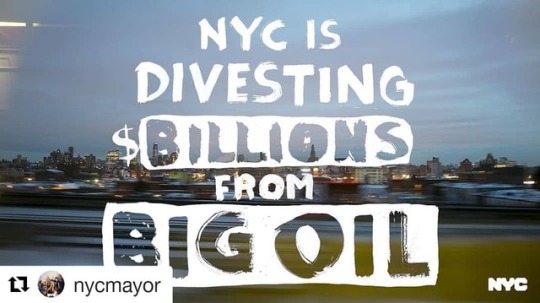
#Repost @nycmayor (@get_repost) ・・・ We know what to do with fossil fuels: leave them in the ground. Our city is divesting billions of pension fund dollars from fossil fuel companies because we won't spend a nickel propping up a poisonous industry. #ClimateWeek https://www.instagram.com/p/B22haURALSx/?igshid=9kzkl267my8x
0 notes
Photo

@themanechoice had a massive sale. 60% off! Thanks for the heads up @jameriken. Super excited to try these products! I wouldn’t have bought them otherwise. They tend to be a bit beyond my hair budget. Perhaps @themanechoice could consider different packaging material though? Something more planet friendly. It is #climateweek after all. #budget #naturalhairproducts #sale #experiment #natural #teamnatural #naturalista #reduce #reuse #recycle #accountability https://www.instagram.com/p/B2zBpgBAZIP/?igshid=gy6fvv8vv9h4
#climateweek#budget#naturalhairproducts#sale#experiment#natural#teamnatural#naturalista#reduce#reuse#recycle#accountability
0 notes